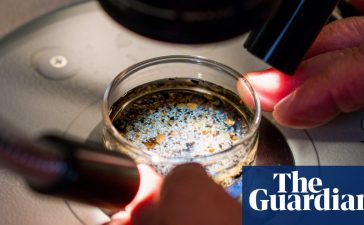
Naveed Sattar, professor of metabolic medicine at the University of Glasgow
Putting down the share bag of crisps, not buying a large bar of chocolate and adding more vegetables to your evening meal are all ways you could easily reduce your risk of type 2 diabetes.
That’s according to Professor Naveed Sattar, a medical doctor and expert in metabolic medicine at the University of Glasgow, who has worked on clinical trials of lifestyle changes and drugs to both prevent and manage diabetes.
Diabetes is a serious condition affecting more than 5.6million people in the UK and an estimated 38million in the US.
While you can’t reduce your risk of type 1 diabetes, which is due to malfunction of the immune system, you can lower your odds of getting type 2 diabetes through lifestyle changes.
Here, Professor Sattar shares four simple tips he gives to patients to help reduce their diabetes risk.
You CAN eat chocolate… just have a smaller bar
For many a ‘snacking culture’ is the reason for their weight gain.
Eating crisps, cakes and sweets between meals can add extra calories, sugar and fat to your daily intake.
Buying snacks in bulk and munching on a big share bag of crisps or a large bar of chocolate, can make it very hard to control how much you are eating.
So, Professor Sattar suggests opting for smaller packs and savouring your treats.
‘Most people reach for cakes, sweets and biscuits and people need them sometimes. What they’ve got to learn to try and do is cut down on what you are eating,’ he said.
Professor Sattar added: ‘Don’t buy a full bar of your favourite chocolate. If you can’t resist it buy smaller versions and eat them slowly.’
‘For example, I have one slice of KitKat, which is about 50 calories, I will have that with a cup of tea twice a day and I savour it and eat it really slowly. That seems to satisfy my sweet cravings,’ he said.

Professor Sattar suggests opting for smaller packs and savouring your treats to cut down on refined sugar

Almost 4.3 million people were living with diabetes in 2021/22, according to the latest figures for the UK. And another 850,000 people have diabetes and are completely unaware of it, which is worrying because untreated type 2 diabetes can lead to complications including heart disease and strokes
The simplest fix: ditch those sugary drinks
Cutting out refined sugars by not drinking sweet sugary drinks could be an easy win for cutting your diabetes risk.
Though it can be hard to retrain your sweet cravings Professor Satter told MailOnline the benefits were worth it.
‘You have to learn to replace sugary drinks with low calorie diet drinks or even better water,’ he said.
‘That can take a little bit of time to retrain the palate, but nearly everyone can do it with a bit of faith.
‘It is an easy win because they are empty calories. Drinking full fat Coke or Irn-Bru, whatever your tipple, you don’t need it.’

Cutting out sugary drinks could be a simple way of reaching your weight loss goal and therefore cutting your risk of diabetes
Just one can of full-fat Coca Cola contains 139 calories and 35g of sugars, whereas Diet Coke there is just one calorie and 0g of sugar.
To put that into context, health chiefs recommend adults consume no more than 30g of sugar each day, with this amount equal to about seven sugar cubes.
Too much sugar increases the risk of excess weight gain which is a known risk factor for diabetes.
So, cutting out sugary drinks is not only a simple way to potentially slim down it can also cut your risk of diabetes.
But it’s not just fizzy drinks that are the culprits to hidden added calories and sugar.
Adding sugar to tea and coffee is also slippery slope to weight gain, and therefore, a potential diabetes diagnosis, Professor Satter said.
‘The same applies to adding sugar to your coffee, most people with a bit of effort can completely eradicate sugar in their tea and coffee,’ he said .
However, he acknowledged it can take time to retrain your palate to enjoy an unsweetened drink.
‘Some people can go cold turkey and they get adapted, others can do it gradually and let their taste buds adapt. It takes a bit of effort initially but you will start to see the benefits.
‘I couldn’t drink tea without two sugars when I was younger, and now I drink tea without sugar and if you put sugar in I find it repulsive.’
Those with a high waist measurement, have ever had high blood pressure or who are overweight or obese are at a higher risk of developing type 2 diabetes.
The condition causes the level of sugar (glucose) in the blood to become too high, the NHS says.
‘Type-2-diabetes is a disease of excess fat in the wrong places, whatever your genetic potential it is weight gain that pulls the trigger. So, whatever diet helps sustain or stop weight gain will help you reduce the risk of diabetes,’ explains Professor Sattar.
He said: ‘Once you lose weight and you start to gain a lot of activity you also start to build muscle, which is where you burn your sugar, and then that adds to the benefit.’
‘In most people, there’s almost a straight line between their weight and sugar levels going up,’ he added.
Veg and salad will make you less likely to snack
Half of our dinner plate should be salad or vegetables, according to Professor Sattar.
‘Eat a bit more fruit and add a bit more salad and vegetables to your meals. If you do that those added vegetables will make you feel full and that means you can cut down on cakes, biscuits, sugary snacks and added pasta and chips,’ Professor Sattar said.
He admits it’s not an easy step to make and it does mean the added chore of chopping up vegetable or making a salad, but he insists it’s an ‘not impossible’ change to make.

Professor Sattar encourages his patients to try and diversify their diets and add more fibre rich plant based foods
‘A lot of people simply haven’t got into the habit of eating salad and diversifying their diet, you have to start slow, ‘ he said.
Professor Sattar suggests simply starting by adding a few tomatoes to your plate, then when you get used to that try some cucumber, before eventually adding lettuce.
He said: ‘You have to gradually diversify your tastes and things that you start to enjoy. But you have to put a bit of effort initially.
‘Ideally people would make a number of sustainable steps which might take the six months to fully embed.
‘Start with low goals and build slow, and give yourself time to develop good habits that you start to enjoy. Because you have to retrain your palate to enjoy more diverse foods.’
The more fibre rich plant based food you eat the more full you will feel, so you won’t need to fill up your plate with chips, rice and bread, explained.
Add fruit to flavour fibre-rich cereal
Making the swap to fibre rich cereal such as shredded wheat over popular sugary varieties could be an easy step to cutting your diabetes risk.
Professor Sattar confessed he too made the swap to a low sugar breakfast to reduce his own risk of diabetes.
For him, adding some fruit helped him not only get more fibre into his diet but also add flavour to the cereal.
He said: ‘People think it tastes like cardboard, but I like the taste and texture. I add a bit of taste by putting three of four sliced grapes onto it.’
‘Many people like a sweet taste, so it is about getting used to having less of that sweet taste to satisfy the kick they need,’ he added.
A fibre rich diet both helps sustain a healthy weight and losing excess pounds.
One reason as to why it that it makes you feel fuller for longer and stops your cravings for snacks, Professor Sattar said.
‘Fibre is not absorbed as much into the body, it’s like the gut’s lubricant and it carries calories away with it. Fibre also slows absorption of other things, it’s fantastic,’ Professor Sattar said.











